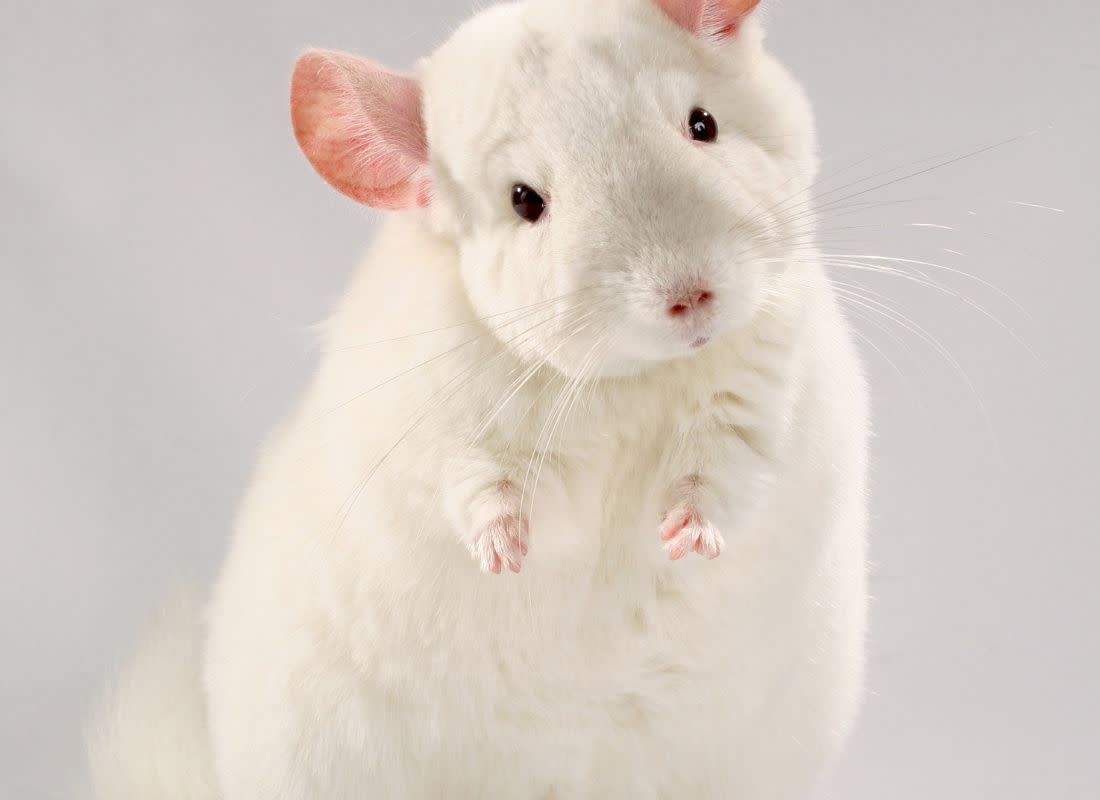Image by Canva
Chinchillas are desert animals that live in the Andes mountains of South America. They are also popular in some parts of the world as pets. But if you choose to adopt one, it’s important to keep them healthy. How? Give them a large cage with plenty of space to run and play and make sure you feed them a healthy diet.
A chinchilla’s main diet is mostly grass, but they also eat smaller amounts of insects, fruits, and vegetables. But there’s something you might not know about these fascinating creatures. They happily bite the wood. Even though they have a lot of insects and fruits, they can still bite into pieces of wood. But why?
That a chinchilla eats wood might raise a few eyebrows because wood, even for humans, isn’t exactly a delicacy. But these furry creatures have several reasons.
First, wood is a reliable source of fiber, which helps them digest their food properly. Second, chewing wood helps maintain their dental health. Third, it provides mental stimulation and helps keep their brains sharp.
Chinchillas Eat Wood for Their Dental Health
Possibly the most important reason chinchillas eat wood is to keep their teeth healthy. They have teeth that continue to grow during adulthood. Upper incisors grow at a rate of about 3mm per month, while lower incisors grow at about 2mm per month and this does not stop when they reach adulthood.
In the wild, this is useful because chinchillas can cut their teeth through tough plants. However, in captivity, they often don’t have access to the same types of abrasive plants, which can lead to overgrown teeth.
If not properly cared for, ingrown teeth can cause great pain to the chinchilla and can even lead to death.
Image by Canva
Chinchillas have sharp teeth, and they use them to chew on their food. This constant gnashing is compensation for their continued teeth growth by wearing them down.
Wood is a great source of sturdy material for chinchillas to chew on to keep their teeth from getting too long. That’s why they need access to straw, wood, or some other solid substance so that their teeth don’t grow too long.
It Helps in Mental Stimulation
In the wild, chinchillas live in burrows and nests made of sticks and branches. This natural chewing behavior helps keep their teeth healthy and sharp. In captivity, they may chew on wood to help fulfill their natural need to chew, as well as for mental stimulation.
Providing your chinchilla with safe, chewable toys and wooden objects helps satisfy their natural chewing habits and gives them much-needed mental stimulation.
Be sure to choose chews that are free of chemicals and other harmful substances, as chinchillas are sensitive to them. With a little creativity, you can provide them with a fun and enriching environment that meets all their mental and physical needs.
Chinchillas Will Benefit From Chew Toys
If you notice your chinchilla chewing on wood, try giving them other chew toys to help satisfy their need and desire to use their teeth. You can also give them small pieces of untreated wood to gnaw on. Be sure to monitor your chinchilla to make sure they don’t eat any large pieces, as this can lead to a blockage.
Image by Canva
Wood is also a source of fiber
The wood has a high fiber content and is a good source of roughage, which is important for chinchillas’ digestive health. While wood does not provide direct nutritional benefits, it is an important part of a healthy chinchilla diet due to its fiber content. Wood provides a source of roughage in their diet, which can benefit their gut health.
Final Thoughts
There are several reasons why chinchillas chew on wood. The most important thing is to trim their teeth and prevent them from getting too long. The second reason is that the fiber wood gives the chinchilla.
If you give your chinchilla access to wood, make sure you don’t give them wood from trees like plum, redwood, cedar, and cherry that can be toxic to these little animals. Make sure they also have access to water at all times.
Sources
- “What Do Chinchillas Eat? | PetMD.” 13 Jun 2016, https://www.petmd.com/exotic/nutrition/what-do-chinchillas-eat.
- “Chinchillas – Exotic and Laboratory Animals – Merck Veterinary Manual.” https://www.merckvetmanual.com/exotic-and-laboratory-animals/rodents/chinchillas.
- Crossley DA. Dental disease in chinchillas in the UK. J Little Six Pract. 2001 Jan;42(1):12-9. doi: 10.1111/j.1748-5827.2001.tb01977.x. PMID: 11219817.
- Mans C, Jekl V. Anatomy and Diseases of the Oral Cavity of Chinchillas and Degus. Vet Clin North Am Exot Eye Pract. 2016 Sep;19(3):843-69. doi: 10.1016/j.cvex.2016.04.007. PMID: 27497209.
This content is accurate and true to the best of the author’s knowledge and is not intended to replace formal, individualized advice from a qualified professional.


